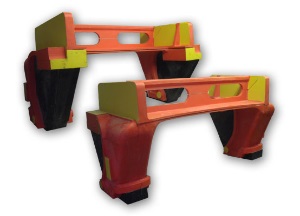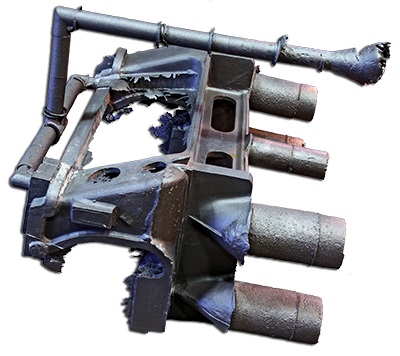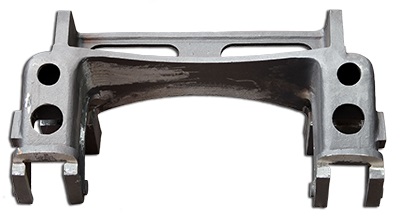Build Diary entries for June 2013
Here are the diary entries for this month. You can use the forward and backward links to see the next or previous months. Most photos taken before 2018 are small size. From 2018 onwards, most photos you see below will have a link to a full size image by clicking on the photo.
| Previous Month | Return to 2013 | Next Month |
| First Lower Combined Frame Stretcher and Spring Hangar (1) | |
| 20/06/2013 | |
 |
|
| During April the first of the lower combined frame stretchers was cast for us by Norton Cast Products of Sheffield. The pattern for this was made for us by Brian Oldford at his workshop and moved to Norton's ready to go into their casting cycle which has a 8 to 10 week lead time. This first image is of the pattern as completed before being broken down for the move to Nortons |
|
| First Lower Combined Frame Stretcher and Spring Hangar (2) | |
| 20/06/2013 | |
 |
|
| This shot is of the casting on the foundry floor, taken the day after casting. It has been allowed to cool and been broken from the mould. At this stage it still needs to go to the fettling shop for removal of the runners and risers employed during the casting process. | |
| First Lower Combined Frame Stretcher and Spring Hangar (3) | |
| 20/06/2013 | |
 |
|
| The fettled casting, with all the excess metal removed, a fine quality British Engineering product, produced to the highest standards, ready to be machined along with the other two when they are completed. The pattern for the next stretcher, part number SL/DE/21642, has already been started. The legs that form part of the pattern/casting are common to all three lower castings, so the pattern has been returned to Brian to be used a the basis for the next one. The extra legs ( the next casting has 4 rather than 2) have already been made and Brian is currently progressing the central deck area of the pattern. As soon as it is available it will be sent on to Nortons to be placed into the production cycle. |
|
| Main Frames Press Release | |
| 21/06/2013 | |
| Since the Clan Project was taken over by the current team in April 2011 a process of consolidation has been taking place, with some of the components of the locomotive being moved to our current central storage facility in the midlands. It is hoped that the remaining parts currently located in other places around the country will be relocated to this same facility in the next few weeks. While at one time this was not considered to be a high priority, it has now become so following the discovery that the main frame plates are not fit for purpose. The holes in the frames were found to have been incorrectly drilled to size with holes in the wrong location leading to a 5" discrepancy from the cylinder centre line to the centre of the middle driving wheel. There are other issues with the (welded in) horn guides being twisted and incorrectly machined. Enquiries were made about remedial work but the cost of this was found to be only marginally cheaper than new frame plates. Trying to correct the horn guides on the existing plates could have also led to further heat related distortion in the frame plates and therefore the decision has been made to order new. This will provide a solid, accurate and reliable set of frames from which to build the rest of the locomotive. The Engineering Team, led by Geoff Turner, a member of the Institution of Engineering Designers, need to establish exactly what we have in the way of inherited components, particularly with regard to the frames in the first instance, and to establish that these components do in fact meet the standards required for frame erection to commence. Each piece that needs to be sent to Ian Riley’s for frame assembly needs to have all the relevant paperwork in place with regard to NDT, material certificates, etc. Without this paperwork it will be difficult if not impossible to have the frames passed as fit by the Certification Body, Wayne Jones and Partners. This procedure will in fact need to be carried out to a greater or lesser extent with every part held. Parts which are not critical to safety will need minimal inspection. The majority of them are single piece parts which will just need a hardness check and a PMI check, which will take approximately 2 minutes per component. We can dimensionally check against the drawings ourselves. Costs for this exercise should be minimal. All engineering projects have their snags, requiring rectification of non-conforming parts and occasionally scrapping the odd piece: this is not uncommon. It is to be hoped that the only parts that are beyond repair are the frame plates, which we already know about. Until all parts are audited it will not possible to state with any certainty if there are any further problems and is so to what extent any rectification work required will be feasible. Members are urged to attend the AGM in Swindon, where a presentation will be given about how the present situation was arrived at, and how the project management propose to proceed forward from this position. |
|


